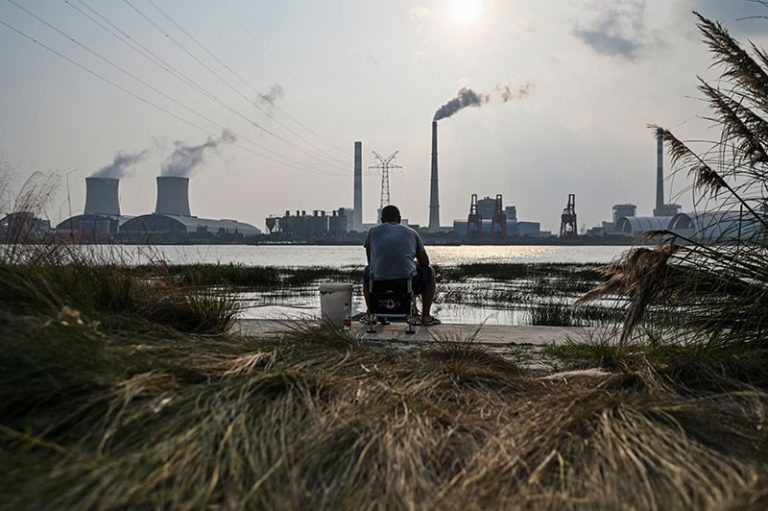
Carbon emissions from fossil fuels fell by 5.4% in 2020, as pandemic restrictions shut down restaurants and factories, grounded planes and closed borders, but it is predicted that emissions jumped to 36.4 billion tons with 4.9 percent increase this year.
By Jeff Tollefson
The abrupt decline in global carbon dioxide emissions during the COVID-19 pandemic, caused by government-mandated lockdowns, will be all but erased by the end of this year, a consortium of scientists reports this week. It predicts that carbon emissions from burning fossil fuels will rise to 36.4 billion tons — an increase of 4.9% — in 2021 compared with last year (see ‘Pandemic rebound’). That’s a faster recovery than many scientists expected. The rapid rebound, driven in part by the increasing demand for coal in China and India, suggests that emissions will begin to rise anew next year without substantial government efforts to bend the curve, the researchers warn.
“This is a reality check,” says Corinne Le Quéré, a climate scientist at the University of East Anglia in Norwich, UK, and a member of the Global Carbon Project, which presented the report this week at the United Nations climate summit in Glasgow, UK, where nations are debating the pledges they will make to curb greenhouse-gas emissions. “I’m expecting that it will really hit home with the negotiators and make it very obvious that action is needed.”
The report also provides new estimates of emissions released from land-use change, for instance, when a forest is cut down to make way for a pasture, or when a pasture is allowed to regrow forest. Although fossil-fuel emissions have been rising, the consortium estimates that cumulative carbon emissions have been relatively level during the past decade, after accounting for a gradual decline in emissions from land-use change. But taking land-use trends into consideration comes with fairly high uncertainty, warns Julia Pongratz, a geographer at the University of Munich, Germany, who worked on the report. “It is too early to judge if the trend in land-use emissions is robust,” Pongratz says.
Carbon emissions from fossil fuels fell by 5.4% in 2020, as pandemic restrictions shut down restaurants and factories, grounded planes and closed borders, the Global Carbon Project estimates. A second consortium, Carbon Monitor, which formed in 2020 to track daily carbon emissions around the globe, estimated a slightly larger drop. Most scientists expected emissions to rebound to some extent, but questions remained, including by how much and at what rate they would recover, and whether governments would ramp up investments in green energy as they sought to stimulate struggling economies.
“What we’ve seen is that the demand that’s bouncing back now has been met largely by fossil fuels,” says Steven Davis, an Earth systems scientist at the University of California, Irvine, and a member of Carbon Monitor. And because oil demand is still lower than before the pandemic, owing to reduced use of road and air transportation, scientists expect emissions to increase as more countries lift pandemic restrictions and economies recover during the next year.
‘Tough lift’
The Glasgow summit — the 26th UN Climate Change Conference of the Parties (COP26) — has already produced several important new pledges at national, corporate and global levels. For example, India has committed to hitting net-zero emissions by 2070 and has established milestones for progress along the way. Some 105 countries have committed to reducing emissions of methane, a powerful greenhouse gas that is second only to carbon dioxide in its ability to cause global warming, and more than 130 have committed to eliminating deforestation, a major source of greenhouse gases, by 2030.
The UN Intergovernmental Panel on Climate Change has estimated that the world would need to roughly halve their emissions by 2030 to remain on track to achieve the most aggressive goal in the 2015 Paris climate agreement — limiting warming to 1.5 °C above pre-industrial levels. But even with considerable progress at COP26, Davis calls the goal a “tough lift”. The use of renewable-energy technologies such as wind turbines, solar panels and batteries is increasing, but he fears it could be 5–10 years before they are widespread enough to cover future electricity demand and to begin replacing fossil fuels.
The report analyzed trends independently for the United States, the European Union, India and China — which are among the largest emitters of greenhouse gases — and found that emissions are generally returning to their pre-pandemic levels. In the United States and the European Union, where fossil-fuel use was decreasing before the pandemic, carbon dioxide emissions are projected to rise sharply in 2021 but remain around 4% below their 2019 levels. India’s carbon emissions are projected to increase by 12.6% this year, to 2.7 billion tonnes, which is around 7% of the global total and roughly equivalent to the emissions of the European Union.
The world’s largest emitter, China, saw resurgence in coal consumption owing to government efforts to stimulate the economy during the pandemic. Overall, the report projects that the country’s fossil-fuel emissions will rise by 4% this year, to 11.1 billion tons, which is 5.5% above the pre-pandemic level.
But the report is not all doom and gloom. Le Quéré sees hope in the data: some 23 countries, whose emissions account for around one-quarter of the global total, curbed fossil-fuel emissions while expanding their economies over the course of more than a decade before the pandemic. “We have the technology and we know what to do,” she says. “It’s really an issue of decision-making and implementation.”
______________________
Courtesy: Nature